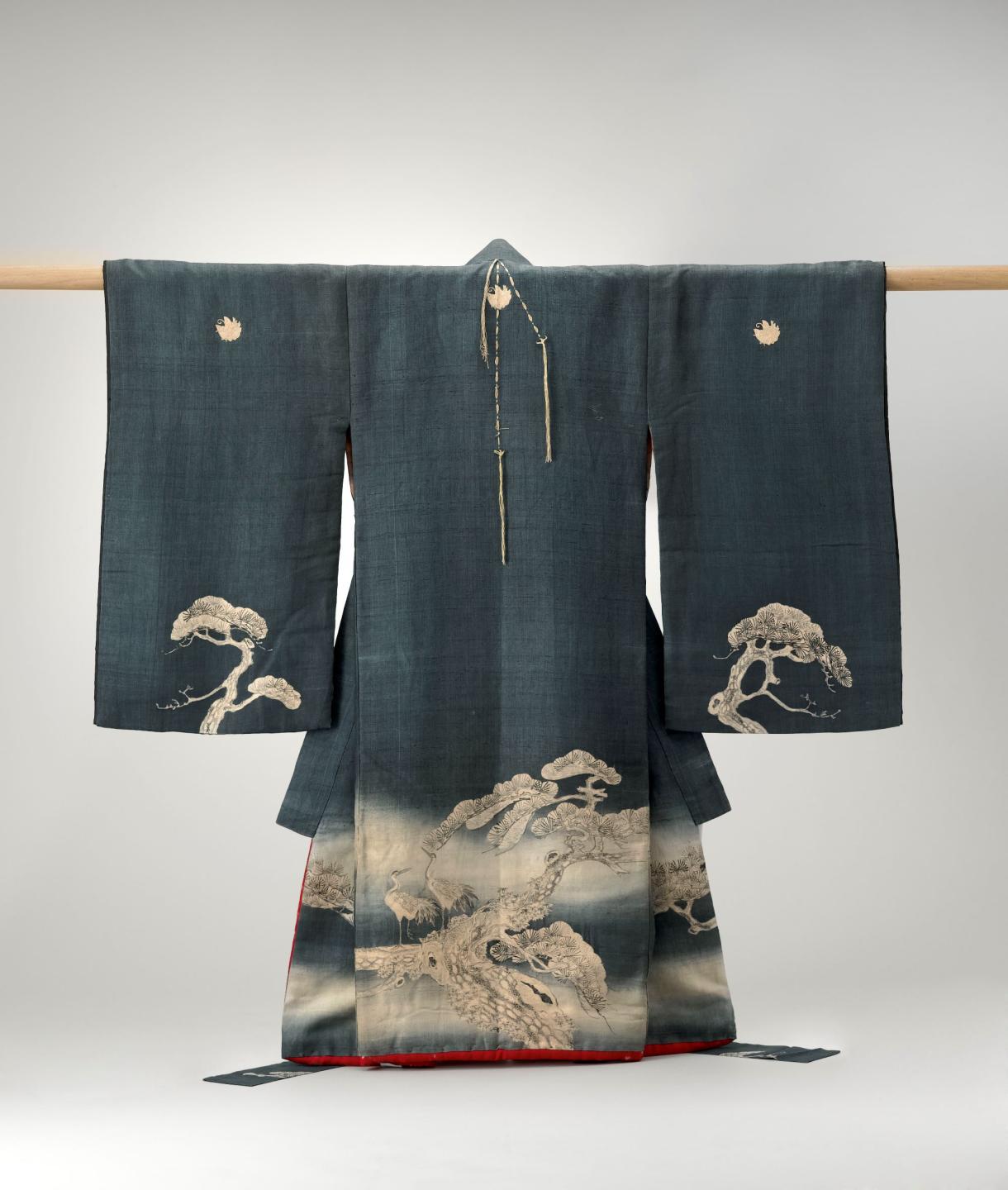On a silk fabric, motifs of tall pines dyed with the yuzen technique are outlined, the roots of the tree taking up most of the garment. In Japan the tall pine with a massive trunk and numerous green shoots has been a symbol of longevity ever since ancient times, and appears frequently in paintings or handicraft objects, often associated with representation of a crane. The bulky old tree we see here symbolises the hope that the child will live a very long time.
Generally speaking, children’s kimonos reflect the evolutions we observe in adults’ kimonos, yet we notice significant differences in patterns, technique, or fabrics meant for everyday use. Feast days kimonos - notably the one following birth or that of ages seven, five or three, during which rites of passage are performed - reflect the importance of traditional celebrations, and for most of them certain motifs repeated continuously since the Edo period. Thus kimonos for the celebration following birth unfurl over a white silk cloth motifs such as pines, bamboos, plum trees, cranes, and turtles, considered “treasures” bearing good luck.
These motifs appear on almost all children’s kimonos where they compose a kind of prayer for their good health. As of the Edo Period, the good luck motifs are enriched with those of the bucket for little girls’ kimonos, or again so many emblematic objects of the imperial monarchy, as well as symbolic motifs inspired by novels or popular songs. For boys’ kimonos, designs bearing an image of vitality, like a dog or a horse, were apt to be used, as well as these symbols of long life: the pine and the crane.
However, since the end of the Meiji period representations of motifs of Japanese plants in the style of Western painting have become frequent. This trend lasted through the Taisho period (1912-1926).

